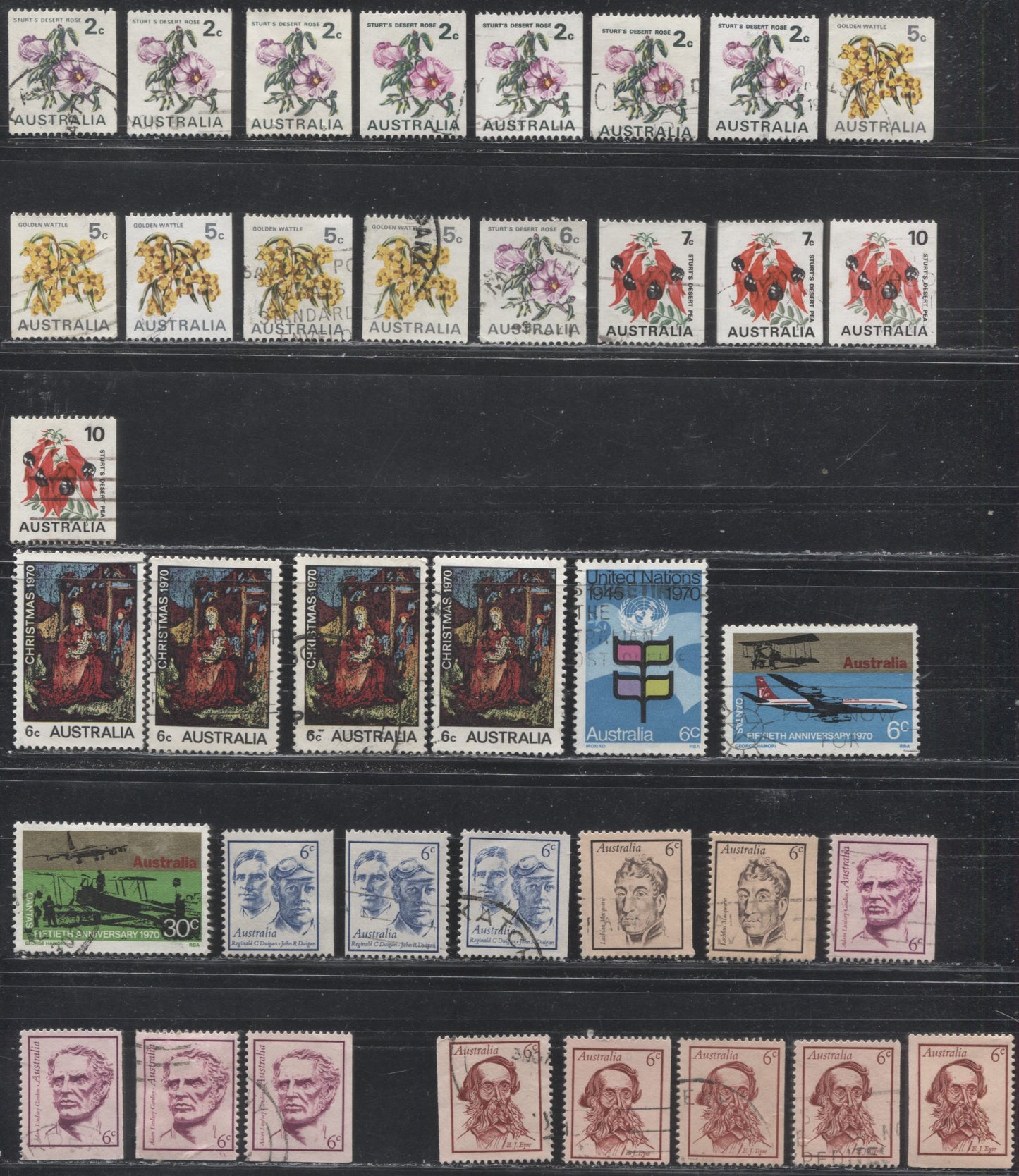Brixton Chrome
Australia #439A/492 (SG#453/482) 1970 Commemoratives and 1970-1975 Floral Coil Definitives, A Specialized Lot of 65 Fine and VF Used Stamps
Australia #439A/492 (SG#453/482) 1970 Commemoratives and 1970-1975 Floral Coil Definitives, A Specialized Lot of 65 Fine and VF Used Stamps
A super specialized group of 65 fine and very fine used stamps, covering nearly all the stamps of the 1970 commemorative issues, and 1970-1975 flower coil definitives, with many different unlisted paper varieties, and differences in the strength of the Helecon coating on the paper. The only missing stamps are SG#457 and 466.
The Australian equivalent of tagging is called Helecon, which is a chemical in the zinc sulphide group that fluoresces orange-red under long-wave UV light. The very first stamp to be issued with Helecon coating applied to the paper was the 11d Rabbit Bandicoot from the 1958-1964 definitive issue. Later, the 5d orange-red Queen Elizabeth II stamp from the 1963-1966 issue was issued with the Helecon incorporated into the ink. By the end of 1965 all stamps issued had Helecon applied to the paper. On this issue, some stamps are found with a uniform coating on the paper that glows orange-red, while others have the paper impregnated with Helecon, so that it appears greyish white from a distance under UV, but under magnification, tiny orange-red dots can be seen on the surface of the paper. Most of the chalk-surfaced paper stamps from these issues are like this, while the engraved stamps tend to show a Helecon coating on the paper.
The comparison pictures shows some of the differences that can be found on these stamps. As you can see the fluorescence of the paper varies from non-fluorescent to bright fluorescent (probably low, medium fluorescent, and high fluorescent). Most of these differences are visible from the back of the stamps. The sample scan shows some of these differences, ignoring the few instances where the paper fluorescence has become contaminated with the compounds from the envelope on which the stamp was affixed. You can generally see this when the fluorescence is not even across the entire back of the stamp. Where the fluorescence is uniform in appearance, you can generally conclude that the stamp is not contaminated.
Gibbons lists the basic stamps at 29.90 pounds (approx. $59.80) for fine used. The stamps here grade between 70 and 84, with most being 75 or better.
Share






